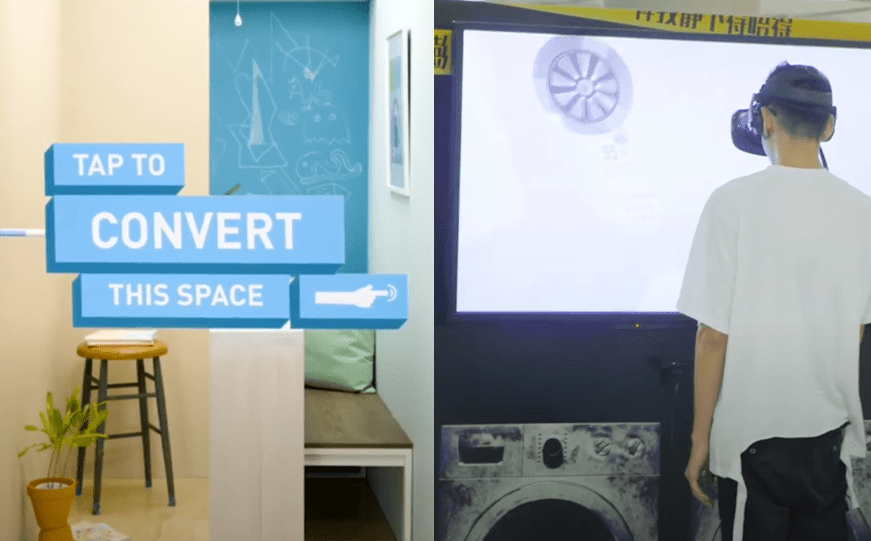Here’s breaking news: emerging technologies are changing the way consumers see the world.
More breaking news: modern home and building products marketing leverages these new technologies in an effort to stay relevant and to capture the attention of end users, with varying degrees of success.
We point to two recent examples from brands in the home category: Lowe’s Home Improvement Stores and Whirlpool Appliances.
Let’s start with Lowe’s.
Lowe’s Inspires through Micro Stories
A brand that clearly understands how technology and social media works, Lowe’s has shown us that the technology is not the point. It’s the message that matters. They understand that they won’t wow their audiences through whiz-bang digital tools alone but rather by delivering content that is both relevant and provides value to their audience.
The trick is shaping the message to meet the constraints of the medium. Lowe’s latest triumph has done just that.
Through an Instagram Stories campaign, the retailer has created a series of micro-stories that show a small, vertical room (which is by no mere coincidence about the same proportions of a smartphone screen) being transformed. Each story is made up of about 60 quick images of the room being transformed.
The stories focus on a single individual transforming the closet-sized room from dull to dynamic. There are at least three versions of the stories, each demonstrating the different possibilities that can be achieved with just a little inspiration as well as (of course) some paint, tools and hardware.
Lowe’s is demonstrating that they understand their customer by providing inspiration in bite-sized chunks. Certainly, no one has a room that size that they would renovate – yet Lowe’s is showing what can be done – even within the tightest constraints.
But there’s a subtext here that is simply delicious. Lowe’s is also showing that they understand the constraints of the medium.
People don’t go to Instagram to demonstrate their long attention spans. They go there to consume quick, digestible, highly visible content. Lowe’s is working within the dimensions of the technology itself… as well as showing how consumers can work within whatever dimensions they have in their homes.
Quite simply, it’s brilliant.
But sometimes brands grab onto a technology and try too hard to shoehorn their message into it.
Which brings us to Whirlpool…
Whirlpool Virtually Reaches Consumers
First, a caveat. This example of a Whirlpool marketing campaign comes from Hong Kong, and we acknowledge that cultural sensibilities may be different than ours. However, we feel there are some parallels and a good lesson for stateside marketers.
Perhaps wanting to jump on the virtual reality bandwagon before it leaves the station, Whirlpool set up a virtual reality game in what appears to be a mall in Hong Kong. It’s designed to be a fun, cool experience to engage passers-by.
One at a time, users don the familiar VR goggles and handset, and begin making their way through some sort of scary obstacle course with washing machines spewing steam and threatening to fall down on them.
When they reach the Whirlpool machine – at the end of the course – and push the button, everything calms down and (presumably) they appreciate the features of the machine.
If the goal was to make a cool, laundry-based VR video game… then mission accomplished. But beyond that, we’re not sure what the value proposition is here.
First, the campaign doesn’t meet consumers where they are. Instead, it requires them to disrupt their routines and take part in an activity in which they were unlikely planning to engage.

Second, as we stated above, it’s a one-at-a-time experience. Sure, Whirlpool created a video that did its best to recreate the experience for anyone watching… but the real experience could be had only by the single user.
Third, the content of the game isn’t really relevant to consumers in the context of doing laundry. It doesn’t demonstrate well an intimate understanding of consumers and the important challenges they face when washing clothes.
It seems to us that Whirlpool bought into the idea of accomplishing something whizzy with Virtual Reality… then spent a great deal of money on the technology itself. Unfortunately, this was all accomplished at the expense of better efforts that could have been invested in making the message and content particularly relevant to the target audience.
—
Technology is creating exciting new opportunities, and marketers should not be afraid to experiment while seeking new ways to reach their audiences. But leveraging technology for its own sake – more often than not – can be a distraction, rather than a sound marketing strategy.




